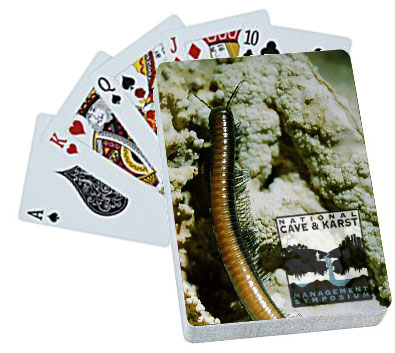
Established in 1959 the White Pine Public Museum houses a wide variety of exhibits. The museum is open daily from 10am-4pm.
Video compliments of Northern Nevada Grotto
Only about 30 miles from Ely as the crow flies, deep in the High Schells Wilderness, lies a remote cave that has yielded many secrets about prehistoric America. The most impressive stands about 6 feet high in a corner of the White Pine Public Museum: The most complete fossilized skeleton ever found of a giant short-faced bear - the largest North American meat-eater of the Ice Age. The short-faced bear - also referred to as the cave bear - was bigger than a modern-day polar bear. It roamed the whole continent during the Pleistocene, that era from about 2.5 million to 12,000 years ago when America was covered in glaciers. Fossil samples have been found from Alaska to Florida, but the most complete fossil from a single animal was found in White Pine County.
It happened in 1982 when a local cave-exploring club got curious about a small stream trickling from a mountain face. Once inside the small opening, they found a cavern stretching far back into the mountain, with a pond at the end. The pond was littered with bones, including those of the cave bear that now reside at the White Pine Museum. It was a real-life Indiana Jones moment for Steven Emslie, a young biologist at the time who was summoned to examine the find.

"It was just magical going in there and seeing all of that the first time, and knowing that very few people had been in there before," said Emslie, now a professor of paleoecology at the University of North Carolina. "You're seeing all this stuff that no one else had ever seen. To go in there and work was so exciting." Image courtesy of White Pine County Tourism & Recreation.
Learn More"It was just magical going in there and seeing all of that the first time, and knowing that very few people had been in there before," said Emslie, now a professor of paleoecology at the University of North Carolina. "You're seeing all this stuff that no one else had ever seen. To go in there and work was so exciting." In reality, the bones at the White Pine Museum are a reproduction. The real bones are housed in a climate-controlled facility at the Los Angeles County Museum, where they remain available to scientists for ongoing research. But the replica is impressive in its own right: A skeleton as big as a buffalo, representing a time when the planet was very different. Enormous creatures like the cave bear would have been a common sight foraging in Nevada's broad mountain valleys. "We can be proud that it was found here, and that we're actually able to keep it here," said Samantha Stroud, a board member of the nonprofit White Pine Public Museum, a fixture in Ely since 1959. "It's one of the few that have ever been found and one of the most complete." After many years on display as a bare skeleton against a blank wall, the White Pine cave bear will soon get an upgrade. By January 2019, Stroud said, the museum plans to complete a new diorama to serve as a backdrop for the cave bear.
The goal is to put the bear in its period-correct context, to show visitors how it lived and what its environment was like in the mountains of Eastern Nevada many millennia ago. That's important. Because, as it turns out, many people might have the wrong idea about the giant cave bear. The species is typically portrayed as a fearsome predator - a carnivore - due to its enormous size and fearsome teeth and claws. But Emslie said that was probably not the case. In a scientific paper he published in 1985 based on the White Pine cave bear discovery, Emslie and his co-author hypothesized that cave bears were primarily vegetarians. Yes, they may have occasionally eaten carrion left behind by another predator, or even killed another animal themselves if the opportunity presented itself. But based largely on analyzing the bones found in White Pine County, Emslie said cave bears mostly ate plants to survive. Carnivores, he said, generally don't develop a large body size like the cave bear because their diets are less reliable. Also, the cave bear's limb proportions don't fit a fast-running animal capable of chasing down prey. This deduction was controversial in 1985, Emslie said, but has since been confirmed by additional research. Also, many people have assumed through the years that the White Pine cave bear is a male. In fact, Emslie suspects it is probably a female bear.
Audio Tour: Ely, Nevada
He was back doing research at the cave in summer 2018, and actually found more bones from the same bear, including some ribs, bones from a foot, a shoulder girdle and scapula. In 2019, he plans to use those bones to finish a new research paper on the bear that he left unfinished way back in 1985. This may include the first radiocarbon dating of the bear's teeth. This will tell us, for the first time, when the bear lived. Until now, we have merely speculated that the bones are 12,000 years old. But Emslie said they could be as much as 60,000 years old. He also plans to return to White Pine County in summer 2019 to explore additional caves, including one that may have been home to a prehistoric raptor.
"That will reopen some new projects for the area, and maybe some new discoveries," Emslie said. Stroud hopes the cave bear diorama will become a major new attraction at the museum. And rightly so, since the cave bear has always been the star attraction. "She is unique to our museum," Stroud said. "No matter what your interest is, she will put you in awe."
The White Pine Public Museum is located at 2000 Aultman St. in Ely, Nev., and is open daily from 10 a.m. to 4 p.m., except Thanksgiving and Christmas day. Admission is $5 per person. For more information, call the museum at (775) 289-4710, or visit wpmuseum.org.
Elevation: 6,437 ft
State: Nevada
District: White Pine County
Coordinates (WGS84): 39.25281, -114.87827
Nearest town: Ely, NV
Distance from the convention center: .9 miles

Arctodus is an extinct genus of short-faced bear that inhabited North America during the Pleistocene (~2.5 Mya until 12,800 years ago). There are two recognized species: the lesser short-faced bear (Arctodus pristinus) and the giant short-faced bear (Arctodus simus). Of these species, A. simus was larger, is known from more complete remains, and is considered one of the most charismatic of North America's megafauna. A. pristinus was largely restricted to the Early Pleistocene of the eastern United States, whereas A. simus had a broader range, with most finds being from the Late Pleistocene of the United States, Mexico and Canada. Image courtesy of White Pine County Tourism & Recreation.

The ghost town of Belmont Mill was established following a silver strike in 1865. Other minerals, such as copper lead and antimony were also mined here. The boom brought in settlers and Belmont grew. The town boasted four stores, two saloons, five restaurants, livery stable, post office, assay office, bank, school, telegraph office, two newspapers, and a blacksmith shop.
As the price of metals fluctuated, so did the fortunes of the town. By 1887, several of the mines closed. Like many towns which are now ghost towns, this one lasted for only a short time.
Some of the buildings are still standing, including the courthouse, the Cosmopolitan Saloon, the Monitor-Belmont Mill, and the combination mill.
![]() Scattered showers and thunderstorms before 5am. Partly cloudy, with a low around 51. East southeast wind around 5 mph. Chance of precipitation is 50%. New rainfall amounts less than a tenth of an inch possible.
Scattered showers and thunderstorms before 5am. Partly cloudy, with a low around 51. East southeast wind around 5 mph. Chance of precipitation is 50%. New rainfall amounts less than a tenth of an inch possible.
![]() Sunny, with a high near 87. Southwest wind 5 to 15 mph, with gusts as high as 30 mph.
Sunny, with a high near 87. Southwest wind 5 to 15 mph, with gusts as high as 30 mph.
![]() Mostly clear, with a low around 46. West northwest wind 5 to 15 mph, with gusts as high as 30 mph.
Mostly clear, with a low around 46. West northwest wind 5 to 15 mph, with gusts as high as 30 mph.

Troglodyte Playing Cards
We have no idea what these will look like yet, but we couldn't think of hosting NCKMS in Nevada without offering some themed-out playing cards. There's a good chance the card backs will feature a cave animal of the year, but we still have some time to figure it out.

Advance registration for the 2025 symposium is expected to open in mid-2024. We will send an email to past attendees when that system comes online.
Feel free to join our mailing list if you would like to receive occasional updates on our plans.